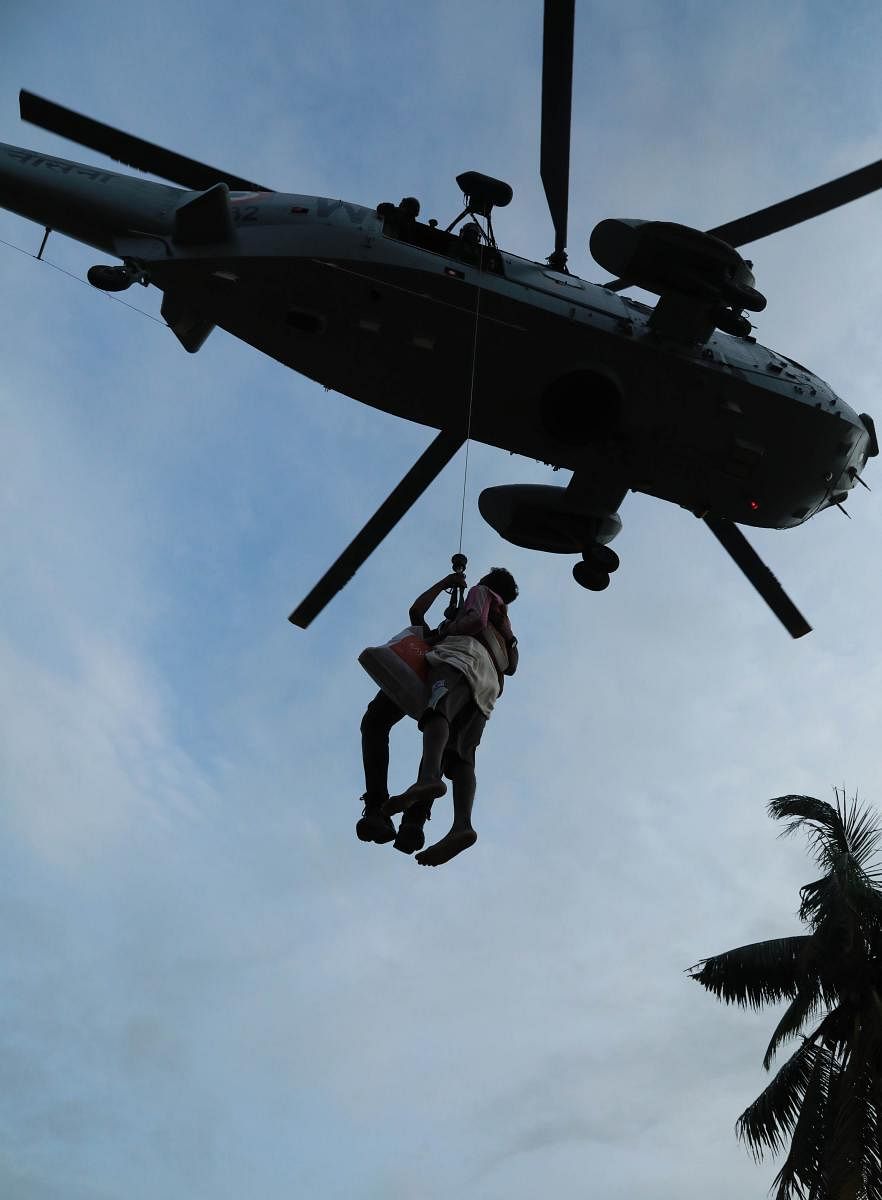
The rescue and relief operations in Kerala by the security forces — the Armed Forces, CRPF, BSF, the National Disaster Relief Force, Coast Guard, Rapid Action Force, the Kerala Police and the Fire Service — have won praise from all corners of the country. Their stellar role during calamities in Kashmir and Uttarakhand in the past have also been recognised.
That the government banks heavily on the security forces for such difficult and onerous operations is evident from the fact that orders are immediately issued to the forces as soon as any natural calamity strikes any part of the country. The reasons for such dependence are manifold.
Being well-organised and compact by their very nature, they are ever ready to move to any place at short notice – by air, rail and road. Just by the blow of a whistle, personnel can be concentrated at any designated place, briefed by the commanders and moved to the place of calamity. The rank structure and hierarchy eases any confrontation and the commanders take the decisions on the spot, depending on the situation, though suggestions of the lower ranks are not ignored. The teamwork and the esprit de corps serve to bond them together and carry out rescue and relief operations as one body.
The biggest asset of the security forces is the availability of all machines and equipment to undertake any task. While the army has the capability to lay bridges using its engineering regiments, the air force and navy utilise their helicopters and boats to rescue stranded people even in the remotest areas. The specialised forces like the NDRF and the RAF, too, are equipped with sophisticated equipment and even trained dogs to trace people buried under debris and rescue them.
In Kerala, as many as 163 boats of the NDRF, 60 of army, 51 of the navy and 30 motorised boats of the Coast Guard were pressed into service, apart from 2,800 life jackets, 1,400 lifebuoys, 27 light towers and 1,000 raincoats, though these were much less than the requirement.
While the air force sent 11 transport aircraft and 23 helicopters from their bases at Yelahanka in Bengaluru, Sulur, Kochi, Thiruvananthapuram and Nagpur, the naval helicopters carried out some 176 sorties to rescue the stranded and shift them to hospitals and relief camps. Not to be left behind, the Railways rushed nearly three lakh litres of water to affected districts.
But for their timely assistance, the death toll could have gone beyond the nearly 250 reported. Having rescued thousands of marooned residents in the flood-affected districts and shifted them to the 3,874 relief shelters where over 14 lakh people are camping, the security forces still have the onerous task of transporting relief material from different parts of the country to the affected districts and even arrange their proper distribution until the civil administration is geared up adequately to take up the task.
Over two lakh food packets, water bottles and milk powder have been distributed to the people and more are on their way. The BSF has already started removing the uprooted trees from the roads and repairing them.
The dedication and motivational level of the forces is of a high degree. Not infrequently, at great risk to their own lives, they undertake rescue operations, as was done recently in Ernakulum when a pilot almost landed on a roof to rescue the stranded elderly people. In yet another instance, they rescued a pregnant woman and flew her to a military hospital where, within half an hour, she delivered a baby. But for the timely medical aid, she could have undergone a traumatic experience.
Coupled with their dedication and the will to carry out rescue operations incessantly for hours at a stretch is the advantage of their having been trained to carry out these specialised tasks.
While training is imparted to most security forces personnel during their basic training, specialised training is imparted in the use of sophisticated equipment to those inducted in the NDRF and RAF battalions.
These trained personnel are rotated in other central paramilitary battalions after they have completed their tenure in the specialised units, thereby leaving a good reserve of highly trained personnel in almost all battalions of the central forces.
The honesty and reliability of the personnel of the security forces can be gauged from the fact that most relief materials are delivered to the people through them. Often, there are complaints of relief material being pilfered and diverted when routed through civil authorities. But when routed through the security forces, it is ensured that the relief materials are delivered to the last man in relief camps and even to their villages and houses. There have been several instances where these personnel have skipped their meals so as to donate them to the needy and stranded residents.
While the security forces are being lauded for their heroic role in rescue and relief operations, small groups of locals, particularly the fishermen, have rendered yeoman service in saving the lives of people and shifting them to safer locations. As flood waters recede, all efforts will now be directed towards rebuilding homes, repairing a large number of bridges and some 10,000 kilometres of damaged roads.
Within four months of the collapse of a foot overbridge at Elphinstone Railway Station in Mumbai last year in which 23 people were killed, the army was able to construct a new bridge much to the relief of locals there. Though the army is not meant to take up such construction work of civil nature, it may not be too much to ask that in times of such calamities, they render a helping hand. The CRPF, for instance, has taken up the responsibility of constructing roads in Chhattisgarh, where contractors fear to tread due to the threat from Maoists.
(The writer is retired IGP, CRPF)